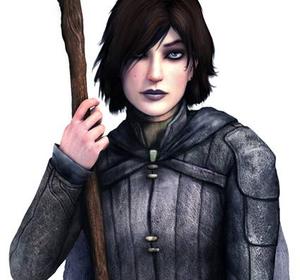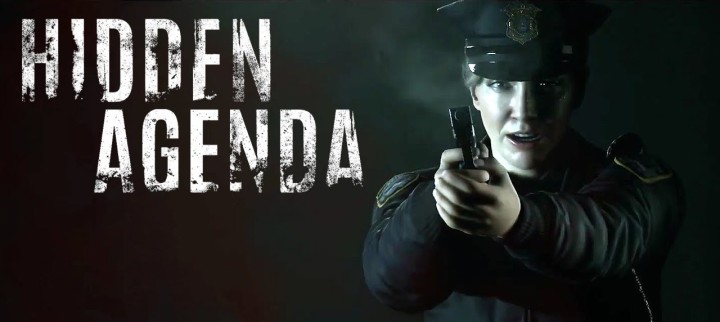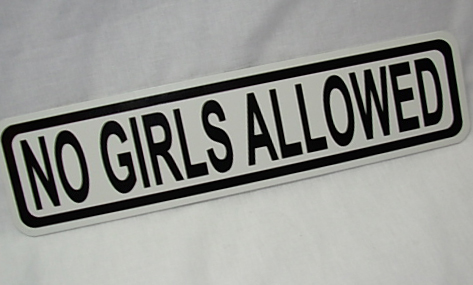Last week, I wrote about the revelation that Mass Effect’s Commander Shepard was originally conceived as a woman, at least in visuals (not necessarily in terms of game content), a piece that sparked a bit of discussion on my Facebook page about the nature of the industry and reality. “Reality” is something I hear a lot in these discussions, as in, “the reality of the industry is that games like X just won’t sell,” or, “the reality of the industry is that it’s male-driven.” You know the drill; we’ve all heard or maybe even delivered these diatribes on the state of the industry, but this week, those kinds of statements have been much on my mind, as I find them impossibly frustrating in that they are concerned only with what is, not potentiality. It seems fallacious to simply say, again and again, but this is what’s worked, what’s always worked, and so it is what will work.
We know the industry has long been skewed toward men, and I’m not just talking about the obvious dominance of white, cis-male heroes, but in a historical capacity, something that’s being explored in mainstream games journalism with great flair these days, with Tracy Lien’s excellent feature last winter on the history of women and games marketing, and just last week, Jessica Conditt’s look at race and gaming. Conditt’s piece opened with a look back at the early days of computer advertising; those early ads were filled with, and geared toward, men. White men. We know, too, that the developers skew white, and male. We know that the ESA says gamers are more and more likely to be female these days, but we all guess that maybe those numbers don’t reflect even splits among different types of gaming; there’s a lot of pushback when those numbers are quoted. “Yeah, if you include mobile games,” is something I hear a lot, meaning it’s not like women are out there playing console or PC games in equal numbers (see Charlotte’s recent post for some of this, too). But the truth is, we don’t know. We’re guessing.
What we don’t know is this: Who’s really playing what? We can measure some of that. We can measure who buys what, or what people say on surveys, but there are simply too many difficult factors to track to get an absolutely accurate picture of gaming activities across the board. More, we don’t know what people would play if things were marketed differently, or if there was more diverse representation on the development side. We cannot measure the potential of the games industry.
At last week’s Critics’ Choice awards, Patricia Arquette picked up Best Supporting Actress for the film Boyhood, and included something in her speech that seems relevant here: “People often say about movies ‘audiences don’t want to see that.’ At this point, with small movies, producers, financiers can no longer say ‘audiences don’t want to see that.’ We don’t know what they want to see.”
We don’t know what they want to see, which is why we get unexpected successes, both critical and commercial. We can make guesses; we know certain films, shows, and games will make money and be well-received. It’s the risks we can’t predict, not even based on factors we can measure, such as past success of similar content, because the matrix of measurable factors is nearly impossible to calculate. We have to look at writing, talent, production, marketing, and availability. When we apply this standard to games, there’s also development and design. A game may be stellar in every way except design, and fail. A good game may not have the marketing power, or a team savvy enough, to give it the boost it needs. A game may simply have limited release, or as we see so often, may just not push enough boundaries. As Gil Almogi said recently in writing about Coming Out on Top, “I may be a whiner, but I suppose I desire more from “gay” games at this point in my life. I want games to feature more versions of queerness and tell all those people that they are entitled to love and fucking, too.” I don’t think that’s whiny at all. I think it’s reality for most gamers who don’t fit into very standard ideas of what a gamer is, or wants. The bars are set so low that we’re supposed to be grateful when we’re tossed a subpar effort that repeats familiar tropes, just because there’s a female lead, or a gay lead, or because someone who’s not a white male has a background storyline or some meaningful dialogue. If Gil’s a whiner, I’m a whiner, too, because it’s just not enough. I think we can do better, and I think we would see success.
I was challenged, last week, and asked what I wanted. What I thought would demonstrate the industry’s potential. Give us a woman in the next Grand Theft Auto, I said, even though I’m not a particular fan of the franchise (it’s okay, just not a favorite). People would fuss and wail and gnash their teeth, and then, I believe, they would buy it. And the face of the industry might just change forever.
I knew this discussion had happened before and after the release of Grand Theft Auto V, so I hunted down old articles and read the comments, sometimes thousands, discussing the potential of a female GTA protagonist. There was plenty of support, with armchair developers talking about female serial killers and gangsters whose stories could be used as narrative seeds, and people posting pictures of very physically capable-looking women when detractors said the mechanics of the game — dragging people out of cars, for instance — would be unrealistic with a female avatar. And there was a lot of that — people declaring the game could never work with a female lead. It just didn’t make sense. Women don’t act that way. It’s not realistic. And to that, I say: Grand Theft Auto is not a franchise grounded in realism. It’s not realistic to run out into a crowded street, jack a car, drive through a city, knocking civilians and other cars out of the way, leap out while ramping away, action roll across the ground, grab another car, drive through a park, stop to shoot some people, and then escape — and the fact that we see such insane maneuvers in movies and television shows doesn’t make it any more realistic. It’s fantasy. That’s okay; games, by and large, are exercises in fantasy.

Sure, the GTA franchise has realistic elements. There are plenty of things that could happen, and do, that players experience while navigating the story and all associated side missions, quests, and other content. It’s fantasy, made no more or less realistic by the players strolling through GTA online criming while half-naked. Bikini tops and pig ears are probably not great life choices for one’s career as a master criminal. So this means is that when people say “it’s not realistic for a woman to do this,” it’s really just that they haven’t seen it or can’t imagine it. Women aren’t usually the characters performing such outrageous actions in entertainment media. We don’t have a lot of experience with it. That doesn’t mean we couldn’t accept it, even if we say we couldn’t.
But we won’t know until someone makes the leap and really pours the resources, from beginning to end, into a game that truly sells some different experience. There are games that have pushed the envelope, or come close, but usually fail in one level or another, and in the coming weeks, I’ll explore a few of those titles.





3 thoughts on ““That’s Just How Things Are,” or Ignoring Potential in the Games Industry”
I’ve always hated the excuse “that’s just the way things are”(My dad used this saying too often). Because they’re only that way because we let them be that way, at some point they were something else so why not change it now to the better. >.<
^— You should be running the world.
Exactly! Of course things can change. I’ve never understood where this fear came from, particular in regard to the games industry. What’s the worst that happens — we end up with a less-than-perfect game? See every game ever for examples.